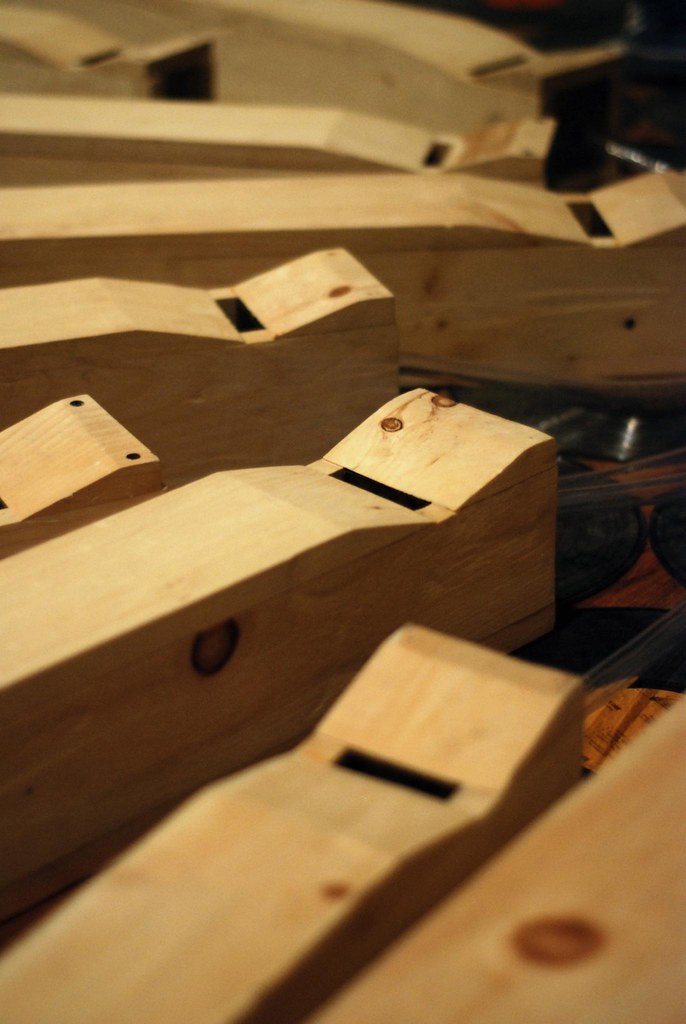To those of you who don't know how to build valves for your organs, I suggest you to read and you'll find a smart solution: using mousetraps!. Cammisa doesn't care much about the keyboard or perfect pipe tuning. However, she manages to create a very suggestive and enigmatic sound by using pinewood pipes. The horizontal fixing of tubes on each side is far interesting.
The pipes are built on Montre pipe specifications. I looked up schematics online, and bought the wood, cut it to size, and put it together with wood glue.
The tubes can be sort of tuned.. I used screws to put the caps on, and if the pipes sound squeaky or off, I use a screw gun to tune it. I didn't build any tuning slots, though.
The blower was originally an industrial shop-vac. I threw it into reverse and attached the tube to the windchest. Voila!
I built a baffled box to muffle the shop-vac. They are much noiser than a traditional blower.
I did eventually buy a proper blower. The blowers I use now are sourced from old IBM copy machines. They were fans that would cool off the copy machines. I daisy chain them together to get the right amount of pressure.
My stops are mousetraps with flexible, clear vinyl glued to the metal. The vinyl plastic creates a sealed barrier. I then pull on strings which are threaded through holes in the top of the windchest to play the organ.
I sourced alot of the material. I did buy white pine, and a few other small things, but sourced almost everything else. The windchest is made from a combination of locust wood and pine. I do not recommend using locust wood! It is very, very, hard, and if you are not perfectly exact while cutting it will splinter in all sorts of terrible ways.
The building process was full of trial and error. I recommend going slowly, and carefully, as you build your organ. Measure everything twice. Find a place where your organ construction can rest, safe and unmolested, for a full day. Building an organ is like building a house. You have to let it settle into itself.
i'm looking forward to learning more about your organ experiments."




Cap comentari:
Publica un comentari a l'entrada